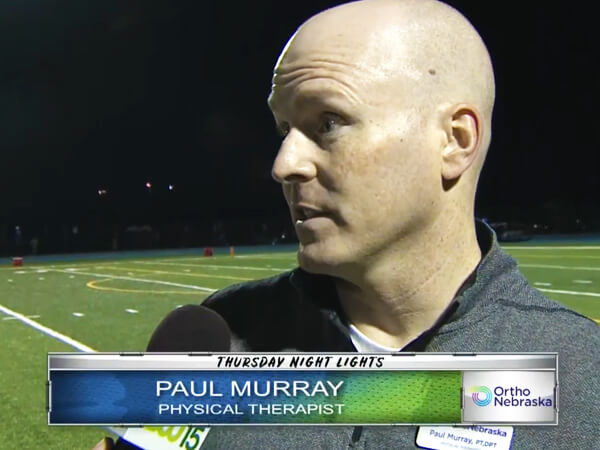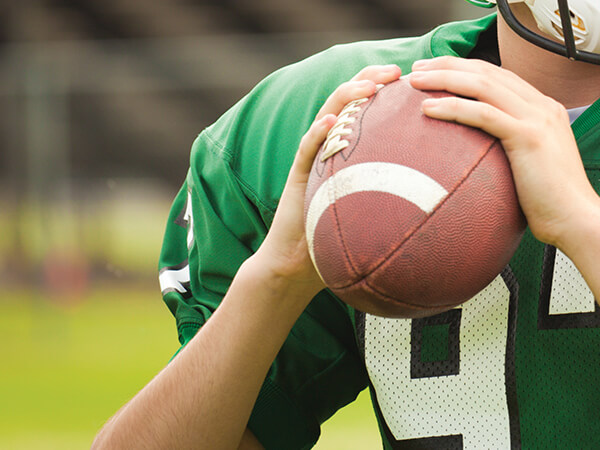07/18/2018
Every parent wants their child to succeed in as many areas of life, whether it’s academics, sports, fine arts or countless other activities. This leads to questions of how to invest your child’s time to maximize the benefits and minimize the risk in their future. Increasingly, parents and children elect to divvy up free time one of two ways: diverse activity or sport specialization. When a young athlete focuses on one sport for the majority of the year (8 months or more) it is referred to as sport specialization. I’m hoping to shed some light on this trend which is quickly gaining traction in youth athletes.
What is sport specialization, and what are the perceived benefits?
Sport specialization is defined generally as participation in a single sport, year-round sport-specific training and participation on multiple teams of the same sport. There is a growing demand in youth athletics as nearly 72% of school-aged youngsters are participating in at least one organized sport. This means more opportunity, but also creates more competition. Recent studies report sport specialization may be reaching 30% in young athletes and up to 45% by late high school years. There are several suggested hypotheses to why sport specialization has increasing popularity with youth athletes – desire to play at the next level, whether it’s high school, collegiate, professionally, or at the Olympic level, pressure from parents to secure college scholarships or professional contracts, or coaches persuading players to dedicate more time to a particular sport. In a study of professional baseball players, they ranked themselves as the most influential component to specialize and ranked parents second. Division I athletes ranked enjoyment of the sport as the most influential reason for specializing.
What are the risks and results of sport specialization?
Intense training in a single sport has several physical and psychological risks associated with it, including overuse injuries, burn out and social isolation. This may lead to dropping out of sport as well as a negative outlook and reduced enjoyment of physical activity later in childhood and throughout life. This bad outlook on physical activity may lead to sedentary lifestyle choices and risk of becoming overweight. Young athletes who don’t diversify their sport participation may not fully develop lifetime motor skills. Unfortunately, hard work will only get individuals so far and early sport specialization does not ensure success. Elite athletes often have parents or siblings that were also gifted athletes. Genetics play a role in how high an athlete’s ceiling is, but children of athletic parents may receive more inspiration and encouragement to pursue athletic achievements. The odds are stacked against young athletes hoping to make a career in their respective sport. Only about 0.2% – 0.5% of high school athletes ever get the opportunity to showcase their skills at the professional level.
Who is most likely to specialize?
Several studies have looked at the specialization rates between sports and gender. Research suggests that specialization increases throughout adolescence and that is it no higher or lower based on gender or sport in most cases. There is less prevalence of specialization in youth football athletes, which may be due to lack of organized and structured travel or off-season football teams. Furthermore, these athletes are often encouraged to participate in off season strength and conditioning programs, but these activities typically not considered sport specific. This allows football athletes to partake in pick-up basketball games and other recreational sports to enhance motor skills and engage in social interaction with their peers. On the other hand, sports with year round travel teams are much more likely to specialize. Sports like gymnastics, diving, and figure skating that hit their competitive peak prior to full athlete maturation are more likely to specialize and do so in early adolescence. Research has shown that elite gymnasts often choose to specialize early, before age 12. For these athletes, it seems that early specialization may be acceptable, due to the sure nature of their sport. According to the one study, athletes participating in team sports, tennis and golf should not specialize until middle adolescence, and athletes competing in endurance sports, track, and distance events should not specialize until late adolescence.
What are the alternatives to sport specialization?
There are several options to promote the development of foundational physical and cognitive skills needed for success in sport participation. It all starts in schools with physical education classes. This is where students get introduced to a variety of sport settings and activities. The youth in this day and age are participating more in organized sports, but are showing lower motor skill competency and muscular fitness. Before children get involved in competitive sport participation, they should develop their motor skills and physical fitness to avoid the potential for acute and chronic overuse injuries. Allowing young athletes to engage in a variety of sports allows them to build a strong foundation for future success. Developmental programs must be tailored to the age and physical maturity of children and adolescents to ensure a strong of foundation of skills. To reduce the risk of injury weekly hours of intense sport training should not surpass the athlete’s age, and should never be greater than 16 hours/week. A sport training ratio is described as the amount of hours spent in organized sport activity compared to the hours of unorganized free play. Research suggests that when this ratio exceeds 2:1 athletes are at a higher risk for chronic overuse injuries. Competition should not be the starting point for physical activity, instead training and focusing on individual deficits should first be implemented. Integrative neuromuscular training (INT) is one way to train young athletes and incorporate psychosocial, neuromuscular, visual motor, and neurocognitive components. INT involves several conditioning exercises focused on building strength and precise motor control. These activities allow athletes to foster their motor skills, muscular fitness, and sport performance while reducing the risk for injury. INT programs implemented 2x/week for 15 minutes prior to a physical education class showed enhancements in health- and skill-related fitness measures. The goal of INT programs is to utilize program variation, progressive exercises and structured recovery to positively impact the mastery of fundamental movements.
Conclusion
Many parents and their children have aspirations of sport success in high school, college, or even at the professional level. Tiger Woods started intense training at a young age, and had tremendous success, but that is rarely the case. If Tiger hadn’t started training so early could he have avoided some of the wear and tear on his body? It’s hard to say. One thing research tells us that we can be sure of, is the majority of division I athletes were not specialized in one sport during high school. Therefore, specializing in an isolated sport during one’s high school years may not necessarily increase chances at playing at the collegiate level. Starting at a young age, children’s time should be invested in unstructured play to boost motor skill development. They should also be given the opportunity to explore a variety of sports to discover one or more they truly enjoy. Training hours per week should not exceed the athlete’s age, and should always be kept under 16 hours/week to assist in injury prevention. When implemented correctly, strength and conditioning training programs can benefit both active and inactive youth. These programs, such as INT, can help prepare for the demands of competitive sport, optimize potential success, and reduce the risk of injury. But of course, the main objective of youth sports is to learn and have fun!
Give us a call at (402) 609-1750 to learn more.





